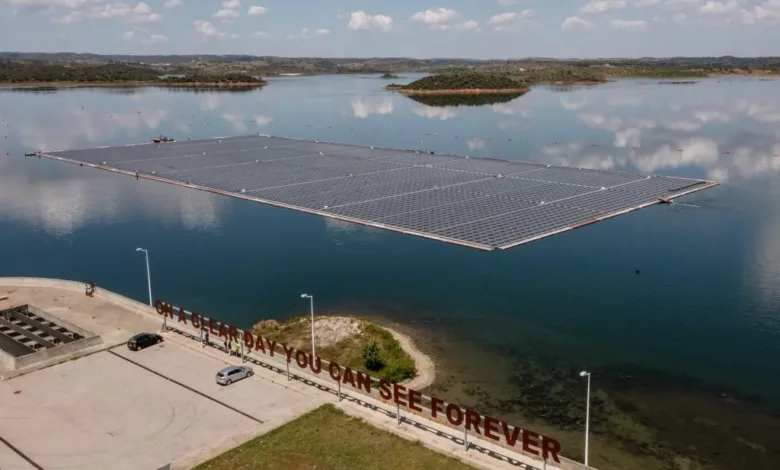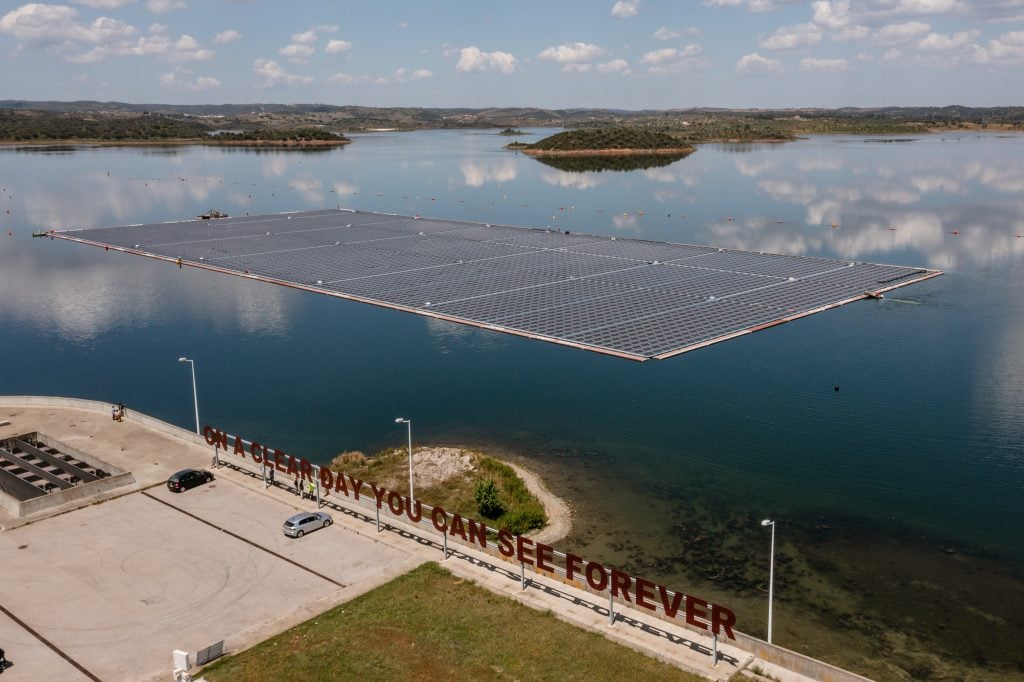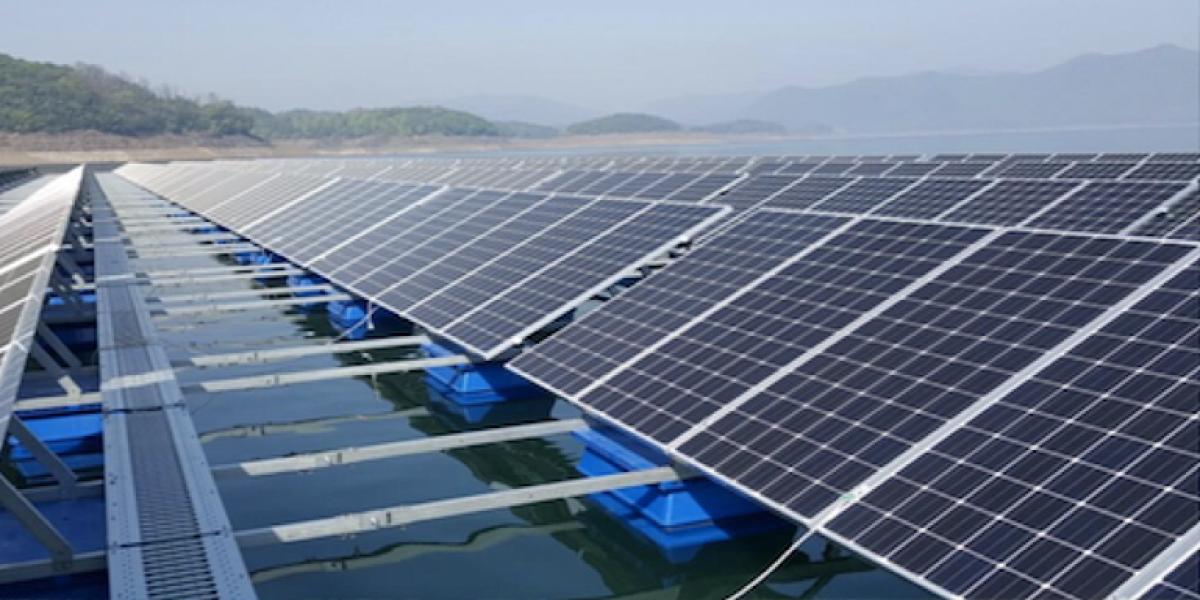The Rising Tide of Floating Solar Panel Farms: A Renewable Energy Revolution
Harnessing the Sun's Power on Water: The Booming Trend of Floating Solar Panels in the United States

Among the innovative solutions emerging in the renewable energy landscape, floating solar panel farms have taken center stage. The global shift towards renewable energy has gained significant momentum in recent years as nations strive to combat climate change and reduce dependence on fossil fuels. Building upon the success seen in Asia, the United States is now embracing this technology, with floating solar farms beginning to boom across the country. This article provides an in-depth exploration of the rapid rise of floating solar panel farms in the United States and their role in advancing renewable energy generation.

The Promise of Floating Solar Panel Farms:
Floating solar panel farms, also known as floating photovoltaic (FPV) systems, hold tremendous potential for revolutionizing solar energy production. By deploying solar panels on water bodies such as reservoirs, lakes, and ponds, these floating farms offer unique advantages. They maximize land use efficiency, as they can utilize vast water surfaces that are otherwise unused. Additionally, floating solar farms have been shown to enhance energy production due to the cooling effect of the water, which improves the performance of the solar panels. Moreover, by covering water surfaces, they reduce evaporation, preserving valuable water resources.
The Asian Success Story and its Influence:
Asia has emerged as a trailblazer in the adoption of floating solar panel farms, spearheaded by countries like China, Japan, and South Korea. These nations have demonstrated the feasibility and benefits of floating solar technology, inspiring the United States to follow suit. Notably, China’s Anhui province is home to the world’s largest floating solar farm, while Japan has set ambitious renewable energy targets. The success and experience gained in Asia have provided valuable insights and best practices for the United States as it embraces this sustainable energy trend.

The Rise of Floating Solar Panel Farms in the United States:
In recent years, the United States has witnessed a remarkable surge in the development and deployment of floating solar panel farms. Factors such as increasing emphasis on renewable energy, favorable policies and incentives, and the availability of suitable water bodies have fueled this growth. Federal, state, and local governments have implemented supportive policies and financial incentives, including investment tax credits and renewable portfolio standards, to encourage the adoption of floating solar technology.
Technological advancements have played a pivotal role in making floating solar farms more efficient and cost-effective. Continuous innovations in floating platform design, anchoring systems, and solar panel technology have improved the performance and durability of these installations. Additionally, the environmental benefits of floating solar farms are substantial. By utilizing water bodies instead of land, they reduce the need for land clearing, minimizing ecological disturbance. Moreover, the reduction in carbon emissions contributes to mitigating climate change.
The deployment of floating solar panel farms in the United States has been driven by various factors, including the growing demand for clean and sustainable energy sources. As the country aims to reduce greenhouse gas emissions and transition towards a low-carbon economy, the need for renewable energy solutions becomes increasingly critical. Floating solar farms offer an attractive option, particularly in regions with abundant water resources and limited land availability.

One of the key advantages of floating solar panel farms is their scalability. These installations can range from small-scale systems in community water bodies to large-scale projects in reservoirs or lakes. This flexibility allows for customized solutions that can meet the specific energy needs of different regions. Additionally, floating solar farms can be seamlessly integrated with existing infrastructure, such as hydropower plants or water treatment facilities, maximizing the use of space and resources.
The environmental benefits of floating solar panel farms are also noteworthy. By covering water surfaces, these installations help reduce water evaporation, thus conserving valuable resources in water-stressed areas. Furthermore, the cooling effect of water enhances the efficiency of solar panels, leading to increased electricity generation. This synergy between solar power and water resources makes floating solar farms an attractive option for sustainable energy production.
In terms of economic viability, floating solar panel farms offer several advantages. The use of water bodies for solar installations minimizes land costs and avoids potential conflicts associated with land acquisition. Additionally, the cooling effect of water can extend the lifespan of solar panels, reducing maintenance and replacement costs over time. As technology advances and economies of scale are realized, the cost of floating solar farms is expected to further decrease, making them increasingly competitive with traditional solar installations.
However, challenges and considerations exist in the widespread adoption of floating solar panel farms. Engineering and design considerations, such as ensuring the stability and durability of floating platforms, must be addressed to withstand various weather conditions and water currents. Environmental assessments are also crucial to minimize any potential ecological impacts on aquatic ecosystems and wildlife habitats. Regulatory frameworks and permitting processes need to be developed to govern the installation and operation of floating solar farms, ensuring safety and compliance with environmental regulations.
In conclusion, the rapid rise of floating solar panel farms in the United States reflects the growing interest and recognition of the potential of this innovative renewable energy solution. With its scalability, environmental benefits, and economic viability, floating solar technology offers a promising avenue for increasing solar power generation and diversifying the renewable energy mix. As technology advances, and with continued policy support and investment, floating solar panel farms have the potential to play a significant role in the transition to a clean and sustainable energy future. By embracing this emerging trend, the United States is not only expanding its renewable energy capacity but also contributing to global efforts to combat climate change and create a more sustainable world.
Proofread & Published By Naveenika Chauhan




